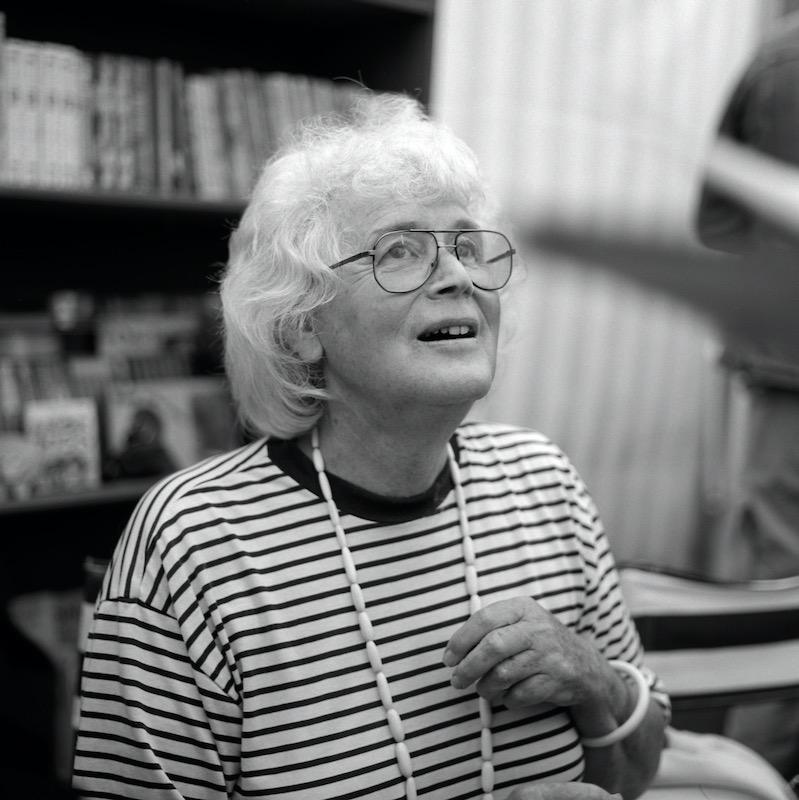Can anybody seriously think Jan Morris was a man? Nor me. Yet she did not have a cervix. And she fought as a male soldier in the Second World War. She also wrote a brilliant book called Conundrum where she described her struggle with her mis-assigned gender and how she overcame it.
It is not until one confronts individual cases that one can begin to make sense of what have been called the Cervix Wars. Someone online used the expression “person with a cervix”, which met with the sarcastic rejoinder, “Do you mean a woman?” And so it went on, with angry anathemas hurled in every direction and a disturbing hint of violence just below the surface.
The key term is transphobia, meaning the opinion which states that gender and sex are invariably identical, and decided by Nature under the direction of certain hormones. So Jan Morris is transphobically regarded as a man masquerading as a woman. This is a type of Natural Law argument, and makes the mistake of most Natural Law arguments of arguing simplistically from an “is” to an “ought”. It says never mind evolution and Darwin’s theory that human beings emerged from a long process of adapting to survive – we must still obey the biology.
The Catholic Church had enough of this in 1968, when Natural Law was used as the basis of the teaching of Pope Paul VI that birth control was unnatural and immoral. Even though his own Birth Control Commission (as it became known) had said the contrary.
Natural Law can still help us, but only if we look at the whole picture. When we are born, humans, like many other creatures including fish and insects, have chromosomes of one of two types, known as XX and XY. In the absence of a Y chromosome an embryo develops female physical characteristics; the presence of a Y leads to male physical characteristics. In humans, mental characteristics usually follow the same lead, so that someone with Y feels male, whatever that might mean, and without a Y feels female, ditto. Body and mind are as one.
But not invariably. A small number of those who have developed male physical characteristics become certain as they grow up, that they are, as they put it, “in the wrong body”. Even in strong-minded characters this can be psychologically very disturbing. The accepted explanation of this phenomenon is that “sex” and “gender” have become misaligned. Sex is the category one is assigned to at birth, and gender, how one thinks, feels and relates. XY in body, XX in mind. Round this has grown up a set of theories about gender identity itself, mainly that it is socially conditioned rather than biologically fixed. This has become a dogma that it is heresy to deny, even though it does not correspond to most people’s experience of themselves. I am pretty certain that any attempt to turn me by social conditioning into a girl – like my three sisters – would have been a disastrous and probably hilarious failure. I am as sure of myself as a man as Jan Morris was sure of herself as a woman.
But the concept of transphobia complicates this immensely. It describes the rejection of gender theory as similar to the prejudice directed at homosexual men and women, known as homophobia. It is different in that homosexuality is not just about identity but also about sexual relationships, a subject that most transgender advocates seem to avoid.
From a Catholic perspective, we have to ask: is transphobia a sin, and if so how serious? But we run into certain difficulties here. Phobias – agoraphobia, arachnophobia etc – are well known to psychologists and psychiatrists, who treat them all the time. Their defining characteristic is an irrational anxiety brought on by exposure to or contact with a particular object or situation. The key thing about them is that they are involuntary. Nobody blames the person suffering from them. They are not sins. They are not confessable.
But the political so-called phobias, like homophobia, Islamophobia and transphobia, are different. They are assumed to be voluntary, that is to say they involve an act of will. But they can also become habitual. A transphobia person today will be transphobic tomorrow, unless they have a moral conversion experience. The nearest Catholic category I can find is the concept of “vice”, being the opposite of virtue. Vices, like virtues, are moral choices but they are also habit forming. The person with a vice is literally “vicious”, though sadly that word has lost its real meaning. As moral beings, a dark shadow hangs over them. They are more inclined to do evil than good.
All the different virtues are related, so a person habituated to practice one is likely to be similarly habituated to practice another. A just man is likely to be compassionate, a compassionate man is likely to be moderate, but also courageous. They are on the whole outwardly orientated, directed towards the welfare of others and of the community in general. So vices are inwards-orientated, directed towards the gratification of individual selfish desires rather than towards the common good. This does indeed call for repentance.
And this helps explain one aspect of the transphobia debate – that those with this particular vice are assumed to have other vices as well. In other words they are deemed to be morally tainted in their whole personhood and in everything they say or do. Only this can explain the phenomenon of “cancel culture”, where one individual accused of transphobia has to be shunned, and denied a platform or even a job. Their opinions on anything, not just on gender issues, are assumed to be worthless or even dangerous. They are vicious.
Can we rationalise this? Only if we regard gender identity as being central to a person’s being, so that any alteration of gender is an alteration in what it means to be human. If this is so, then to deny that is to deny that person’s essential humanity. And that is why it makes sense to treat transphobia as being in the same class as racism, or hatred of homosexuals, if they are denials of a person’s essential humanity. To deny someone’s humanity is sinful. It is a form of hatred.
This at least is the theory, but I find it too binary, as if human attitudes to transgender issues could be grouped into two distinct groups rather than ranged across a spectrum with most people in the middle, not quite sure what they think. It is puzzling – as Jan Morris herself said, a conundrum.
The case we most often come across is where the body says XY and the mind says XX, though it also can work the other way round. The mind, we might say, is the most human part of the human being, so it ought to prevail over the body. I do not find that unnatural. One crucial element in understanding a transgender person is how profoundly and fundamentally they believe themselves to be of the opposite gender to the one assigned at birth. It essentially gives the lie to conditioning theory. They were conditioned to be the gender of their sex, and it didn’t work.
Attempts to deny this belief can be dangerous to that person’s wellbeing. Their mental health is at risk, and suicide is all too common among them. But if this belief can be accommodated and accepted, their mental health recovers, and their desire to live a useful life returns. They become, to coin a phrase, normal and natural. Jan Morris was normal and natural, and lived a good life. And can we deny that that is what God wanted for her?



 Loading ...
Loading ...
What do you think?
You can post as a subscriber user ...
User comments (0)